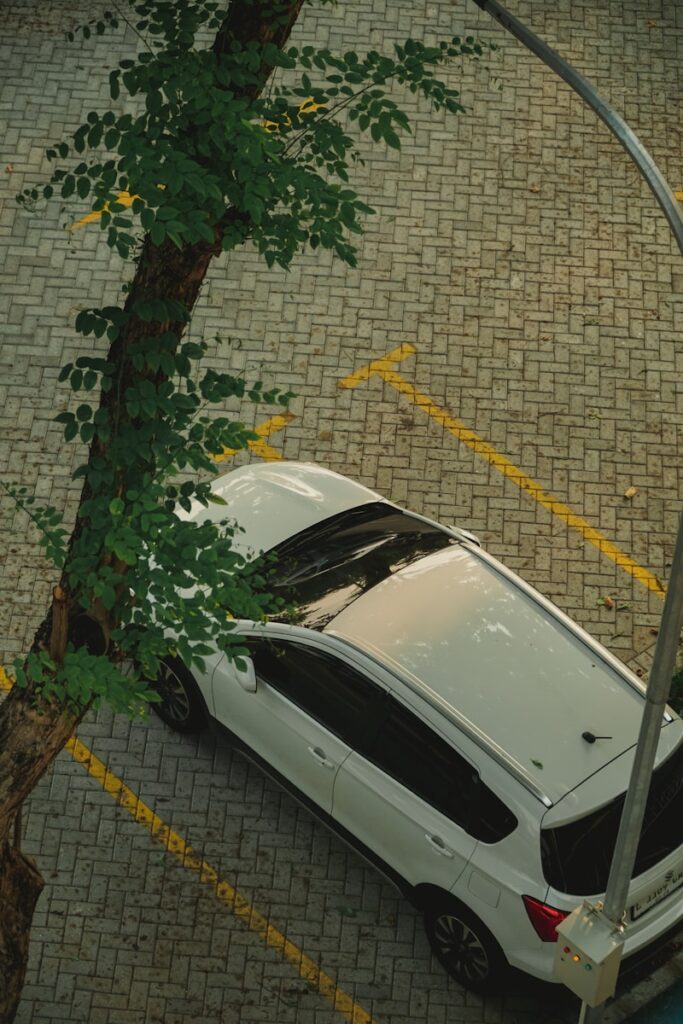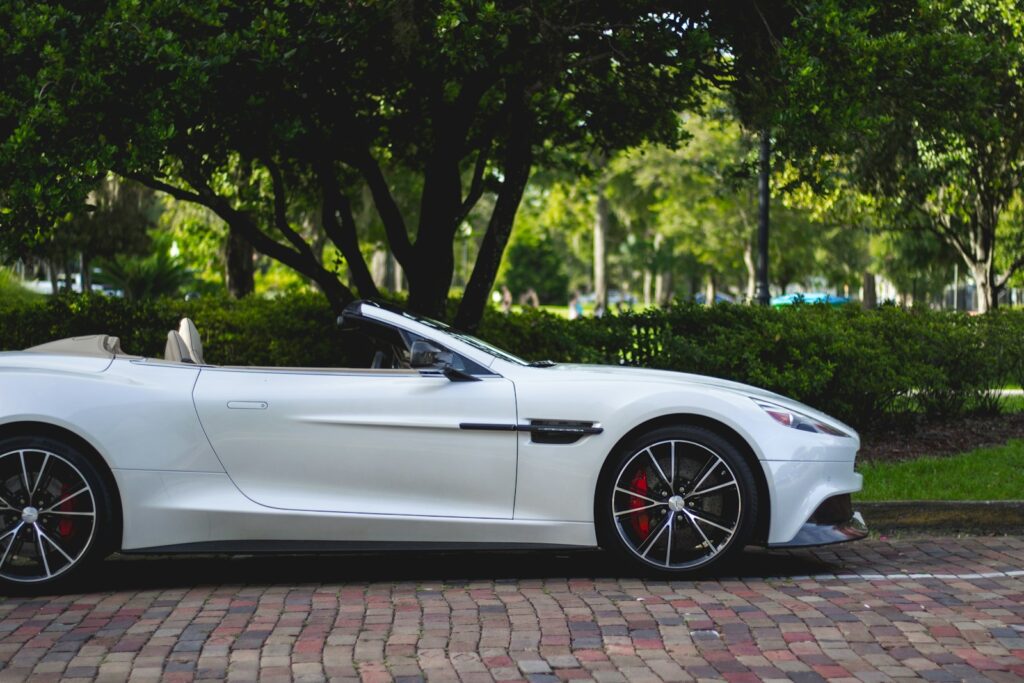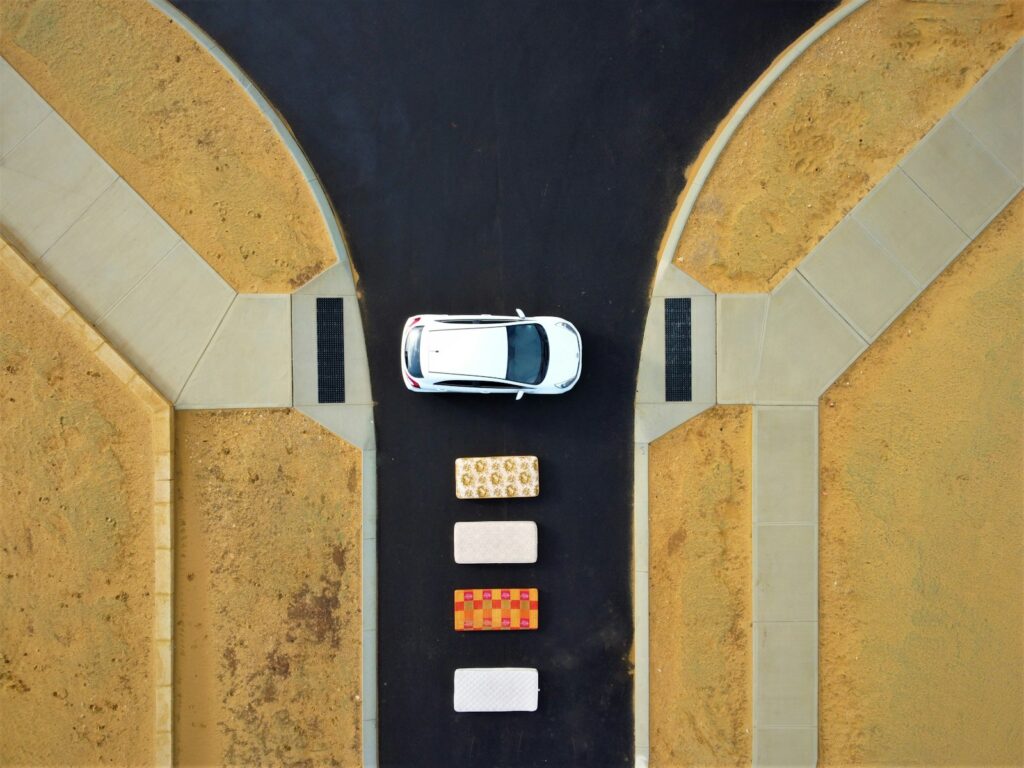
Few driving tasks stir up as much instant anxiety as parallel parking. That moment when you spot a perfect space along a busy street, only to realize it requires this maneuver, can trigger a flurry of nerves. Many drivers even go to great lengths to avoid parallel parking, opting instead for frustrating searches for easier spots or expensive parking garages.
But here’s the secret: parallel parking isn’t a mystical art reserved for elite drivers. It’s a practical, learnable skill that, once mastered, will revolutionize your urban driving experience. Imagine the freedom and confidence you’ll gain, no longer circling the block or feeling embarrassed when you can’t fit into a tight spot. This guide is your blueprint to effortlessly maneuvering into parking spaces, leaving a lasting impression and simplifying city driving.
We’re here to demystify parallel parking and provide you with a “secret formula” that breaks down this often-intimidating task into manageable, actionable steps. By focusing on efficiency and precision, you’ll not only conquer your parking fears but also learn to execute this essential skill with newfound confidence, making you a more capable and alert driver overall.

1. **Understanding Why Mastering Parallel Parking Matters**Parallel parking often strikes fear into the hearts of both new and experienced drivers, frequently cited as one of the common mistakes that cause people to fail their driving tests. However, there’s truly no reason to be nervous about this essential driving skill. Many drivers go to great lengths to avoid having to parallel park, but once you know the steps, it’s a skill you can rely on every day, especially in tight city spaces.
Mastering parallel parking isn’t just about passing your driver’s license examination, where it may very well be a required demonstration of your ability; it’s a practical necessity for urban driving. Cities across America, particularly major metropolitan areas like New York, Chicago, and San Francisco, prioritize parallel parking to maximize limited street space. In these environments, parallel parking might be your only option when visiting popular destinations, making it an indispensable skill for navigating modern life.
Beyond mere necessity, successfully conquering parallel parking offers a cascade of benefits that extend far beyond simply fitting into a space. It significantly improves your overall driving confidence, which then extends to other challenging maneuvers on the road. You’ll also develop enhanced spatial awareness that benefits all aspects of driving, helping you better understand your vehicle’s position in relation to its surroundings.
This mastery grants you greater flexibility when selecting destinations, as you’ll no longer worry about parking options, and you can reduce transportation costs by avoiding expensive parking garages. Moreover, it decreases your driving time and fuel consumption, as you won’t be circling endlessly for easier parking spots. A 2023 survey by the American Driving Association found that nearly 38% of licensed drivers feel “moderately to extremely anxious” about parallel parking, an anxiety that leads many to pay premium prices or choose destinations based on parking availability. By taking control of this skill, you’ll unlock more freedom and confidence behind the wheel.
Read more about: Long-Haul Driver’s Lifesaver: Stay Awake for Hours—No Energy Drinks Required
2. **Familiarizing Yourself with Your Vehicle’s Dimensions**Successful parallel parking begins not with turning the wheel, but with a clear, intimate understanding of your vehicle’s physical size and capabilities. Many common parking difficulties stem from drivers misjudging their vehicle dimensions, leading to unnecessary frustration and multiple attempts to fit into a spot that might otherwise be manageable. This foundational knowledge is your first secret weapon in mastering the 60-second park.
Take the time to truly familiarize yourself with your car’s length, width, and, critically, its turning radius. Pay particular attention to how far your bumpers extend beyond your immediate field of vision, both front and back, and gain a sense of where your wheels sit in relation to your vehicle’s corners. Modern vehicles, with their often longer front ends and higher trunk lines, can complicate spatial judgments, making this self-awareness even more vital.
For a truly practical measurement and to build crucial muscle memory, try this simple exercise in an empty parking lot. Place traffic cones or other objects at your car’s four corners and practice maneuvering around them. This hands-on experience allows your brain and body to connect with your specific vehicle’s dimensions, creating a physical understanding that remains invaluable during actual parallel parking situations on a busy street.
While backup cameras and parking sensors are fantastic tools that can assist, learn to use them effectively as aids, but never become entirely dependent on technology. Understanding your car’s physical dimensions and how it moves in space creates a robust foundation for confident parking, regardless of whether your tech is active or available. This intrinsic knowledge is what truly empowers you to tackle any parking challenge.
Read more about: Veteran Driver’s Genius Moves: Master Any Tight Parking Spot Without Breaking a Sweat

3. **Finding the Optimal Parking Space**Before you even think about steering, the first step to a successful parallel park is finding the right spot. Not all parallel parking spaces are created equal, and selecting an appropriate one dramatically affects your success rate, especially when you’re building confidence. This strategic selection is a key component of the ‘secret formula’ for efficient parking.
When assessing potential spaces, prioritize adequate length. Ideally, you should look for a space that is at least one and a half times the length of your car. While experienced parallel parkers can manage tighter spots, beginners and those aiming for quick, stress-free parking benefit immensely from extra maneuvering room. Most spaces will be about 20 feet long, but aiming for a spot that’s at least 6 feet longer than your car provides comfortable margins for most drivers, greatly increasing your chances of a one-shot park.
Next, consider the reasonable positioning of the surrounding vehicles. Avoid spaces where adjacent cars have parked improperly or are extremely close to the space boundaries, as this can severely limit your room to maneuver. Also, diligently check for any potential static obstacles like fire hydrants, driveways, or loading zones that might reduce the usable space or violate parking regulations. A clear, well-defined space is your best friend.
Traffic conditions play a crucial role in your success and stress levels. When possible, practice on quieter streets or empty parking lots before attempting high-traffic areas. Having impatient drivers waiting behind you adds unnecessary pressure, which can lead to mistakes. If you notice heavy traffic, it’s often wiser to circle the block until conditions improve or find an alternative spot. Clear signaling can also alert waiting drivers to your intentions, sometimes prompting them to wave you on.
Finally, perform a quick clearance assessment. Check overhead clearances for tree branches, awnings, or signs that might interfere with your maneuvering arc. Also, verify that the curb height is manageable; unusually high curbs significantly increase the risk of wheel or undercarriage damage during the parking process. Taking an extra moment to select an appropriate space saves far more time and frustration than repeatedly attempting and abandoning difficult spots.
Read more about: Survival Savvy: 14 Essential Tools More Critical Than a Tent for Wilderness Safety

4. **The Secret to Initial Positioning: Aligning and Signaling**This is where the magic begins, and precision is paramount for your 60-second parallel park. The initial positioning of your vehicle sets the stage for the entire maneuver. Always signal your intention to park before you even begin to slow down or position your car. This simple act is crucial for alerting other drivers to your plans, reducing the chance of miscommunication, and ensuring a smoother process for everyone on the road.
Next, you need to execute the perfect parallel alignment. Pull up alongside the vehicle that is parked directly in front of your intended space. Your goal is to align your car parallel to this vehicle, making sure your rear bumper is even with or slightly past their rear bumper. Some sources suggest aligning your bumpers, while others suggest your seat parallel to their rear door; the key is consistency and understanding your vehicle’s pivot point in relation to the car in front.
Crucially, maintain the correct distance from the side of the parked car. The optimal spacing is approximately two to three feet from the side of the parked vehicle. Don’t get too close, or you might scrape the other car when you make your move, but you also don’t want to be too far away, as this will make it difficult to get close to the curb. Two or three feet will suffice, providing the ideal buffer for your initial turn into the spot.
This precise positioning creates the optimal angle for entering the space successfully. Once you are properly aligned and distanced, and traffic conditions permit, come to a complete stop. Take a deep breath. You’ve set yourself up for success, and now you can proceed methodically through the remaining steps without rushing. This deliberate initial setup is the bedrock of a confident and efficient parallel park.

5. **Setting Up for Success: Checking Mirrors and Shifting to Reverse**With your vehicle perfectly positioned alongside the car in front of your desired spot, it’s time for some critical preparation before you begin your backward approach. This isn’t just about safety; it’s about gaining comprehensive situational awareness, which is a non-negotiable step in the secret formula for a swift and smooth parallel park. These checks take mere seconds but prevent costly errors.
Before making any moves, ensure your rearview and side mirrors are properly adjusted to give you the clearest possible view. Then, perform a thorough check of all mirrors and your blind spots for any other vehicles, cyclists, pedestrians, or unexpected obstacles that might have appeared. You must ensure no traffic is coming from behind and that you are fully aware of your surroundings, both near and far. This complete scan prevents collisions and unnecessary interruptions.
Once you are absolutely certain that there are no other vehicles or hazards in your blind spot and your path is clear, shift your car into reverse. Many parallel parking guides emphasize this readiness; “Once you are certain that there are no other vehicles in your blind spot, shift your car into reverse.” Place your vehicle in reverse gear, but keep your foot lightly on the brake. This stance gives you immediate, precise control over your speed once you begin moving backward.
This preparatory phase, though seemingly brief, is vital. It eliminates guesswork and allows you to proceed with confidence. By systematically checking your surroundings and preparing your vehicle, you create a controlled environment for the complex maneuvers ahead. This focus on awareness and control is what transforms parallel parking from a daunting challenge into a predictable, manageable task, laying the groundwork for your successful entry into the spot.

6. **Executing the Initial Backward Turn Towards the Curb**Now, for the pivotal moment: initiating your backward movement and angling your car into the space. This is the first major physical maneuver of parallel parking, and executing it precisely is key to setting up a perfect park. Once your car is in reverse and you’ve confirmed your surroundings are clear, you are ready to begin this critical step. The secret is in the initial turn and maintaining a controlled speed.
Begin by turning your steering wheel fully toward the curb. In most right-hand parking situations, this means turning your steering wheel all the way to the right. It’s important to do this while your car is still stationary, or just as you begin to move, to maximize the initial angle of your vehicle. This prepares your car to begin moving at the correct, sharp angle, ensuring its rear end swings effectively towards the curb.
Slowly release the brake and allow your car to roll backward. The emphasis here is on ‘slowly’. Maintain an extremely low speed throughout this maneuver. Parallel parking requires precision, not speed; many drivers make the mistake of moving too quickly, which significantly reduces their control and increases the potential for error. Think of it as inching backward with deliberate, measured movements, continuously checking your mirrors.
As your car starts to move backward, continuously monitor the position of your front end in relation to the car parked in front of you. A crucial, often subtle adjustment occurs here: “When your front bumper aligns with their rear bumper, straighten your steering wheel momentarily.” This brief moment of straightening is designed to prevent your front end from swinging too wide and potentially hitting adjacent traffic or the car in front as your rear continues its arc. This small, timely correction is a hallmark of efficient, expert parallel parking, ensuring you maintain optimal positioning as you enter the space.
Read more about: Objective Insights: Comparing 10 Midsize SUVs for Driver Visibility and Blind-Spot Monitoring Performance

7. **Completing the Precise Approach and Final Angle Adjustment**With your initial backward turn underway, the next critical phase involves continuing your precise approach into the space and making the essential final angle adjustments. As your car moves further into the empty parallel parking spot, it’s time to slowly straighten your steering wheel. This isn’t just a casual adjustment; it’s a deliberate action to guide your vehicle smoothly alongside the curb, moving backwards towards the parked car at the other end of the space. Continuous vigilance is paramount here, so diligently check all mirrors and through your windows to ensure you avoid contact with the vehicles bordering your spot.
Once your car’s front has gracefully passed the back bumper of the vehicle parked in front of your spot, you’re ready for the pivotal counter-steering maneuver. This is when you begin to turn your steering wheel sharply to the left, initiating the final arc that brings your vehicle fully into the space. This action precisely pivots your car’s front end into the spot while simultaneously guiding your rear wheels closer to the curb, perfecting your alignment for the ultimate parallel park.
Timing is truly everything in this stage. The optimal moment to begin this counter-steering—turning your steering wheel towards the street—is when your back wheel is approximately aligned with the front bumper of the vehicle behind your space. This careful synchronization creates the ideal arc, ensuring that your vehicle smoothly glides into its final position. Rushing this step can lead to being too far from the curb or misaligning your vehicle, so maintain a controlled, slow pace to nail this crucial part of the process.
Read more about: The Modern Man’s Ultimate Guide: 14 Essential Power Tools & DIY Helpers to Conquer Any Home Project

8. **Securing Your Spot: Straightening, Centering, and Final Checks**As your vehicle continues to inch backward, while beginning to straighten your steering wheel from the previous turn, cast a quick glance into your rearview mirror. This swift check allows you to gauge precisely how close your vehicle is to the car parked behind you. Your objective is to achieve a parallel position to the curb, aiming for an ideal distance of 12-18 inches between your tires and the curb. Being too close risks curb damage, while too far wastes valuable space and might even lead to a parking violation.
Once you’ve successfully positioned your vehicle straight and as close to the curb as comfortably possible, you might need to make a few minor adjustments. Often, this means shifting into a forward gear to precisely center your car, ensuring there’s an equal amount of space in front and behind your vehicle. This final centering isn’t just about aesthetics; it provides ample clearance for both your car and the surrounding vehicles to maneuver freely without obstruction.
With your vehicle perfectly positioned, it’s time to secure your spot. Shift into park—or first gear if you’re driving a manual transmission—and always apply the parking brake, a crucial step, especially when parked on an incline. Turn off your engine and remove the key. Before opening your door, take a moment to check for any approaching traffic, cyclists, or pedestrians to ensure a safe exit from your vehicle. These steps complete the physical act of parking, but there’s one more administrative detail to consider.
In many major metropolitan areas, parallel parking spaces are assigned a parking meter. Don’t let your parking mastery be undermined by a forgotten payment! Make sure to remember to feed coins into your parking meter, or use a parking app, immediately after you parallel park your car. This final check ensures you’re not only parked perfectly but also compliantly, avoiding unnecessary tickets and rounding off your parking experience with complete peace of mind. After exiting, take a quick visual confirmation that your vehicle is within legal distance from the curb, not blocking any driveways or crosswalks, and positioned to allow surrounding vehicles to exit easily, demonstrating consideration for all drivers.

9. **Dedicated Practice: Building Muscle Memory and Unwavering Confidence**Mastering parallel parking isn’t a one-and-done lesson; it’s a journey that thrives on consistent, deliberate practice. Repetitive training is the bedrock upon which true mastery is built. The more you engage in these maneuvers, the more comfortable and inherently confident you’ll become, transforming what once felt like a daunting challenge into second nature. Begin your practice sessions in quiet, open areas, utilizing temporary cones or boxes to simulate parking spaces. This controlled environment allows you to focus purely on the mechanics of parallel parking without the added pressure of real-world traffic, letting you refine each step until it flows smoothly and consistently.
Selecting safe locations for your practice sessions is absolutely crucial. Empty parking lots, tranquil residential streets, or designated practice areas provide the ideal setting. These environments offer a controlled backdrop, free from the stresses of other vehicles or pedestrians, allowing you to concentrate without distraction. As your confidence blossoms, gradually transition to more challenging locations with actual parking spaces, slowly increasing the complexity of your practice environments, from quiet streets to busier urban settings during off-peak hours, and eventually to high-traffic areas with limited parking availability.
Developing muscle memory is truly essential for making parallel parking feel effortless. This invaluable skill is forged through repetition, enabling your body to perform the necessary movements almost automatically. Dedicate your focus to the core steps of parallel parking, practicing them regularly and methodically. Over time, your body will internalize the precise movements needed to execute a flawless parallel park, making the entire process feel intuitive and seamless. This targeted approach, focusing on aspects like distance estimation, wheel turning timing, and mirror usage, builds comprehensive skills more effectively than general repetition alone.

10. **Advanced Maneuvers: Mastering the One-Move Park and Reverse Steering**Once you’ve confidently navigated the basics, it’s time to elevate your game with advanced parallel parking techniques. The pinnacle of efficiency is the ‘one-move parallel parking’ method, a sophisticated technique that allows you to slip into a space in a single, fluid motion. This maneuver demands exceptional control and a deep understanding of your vehicle’s precise dimensions, turning it into a seamless art. To execute this, you begin by perfectly positioning your car parallel to the vehicle in front of the parking space.
The magic happens as you initiate reversing while simultaneously turning your steering wheel towards the curb. As your car gracefully angles into the space, you must smoothly and precisely straighten the wheel, continuing to reverse until your car is perfectly aligned with the curb. This elegant technique significantly minimizes the need for multiple adjustments, making it incredibly useful, especially when navigating tight urban spaces where every inch counts. It’s a testament to your growing mastery and efficiency behind the wheel.
Complementing the one-move park is the mastery of reverse steering, a crucial skill for truly advanced parallel parking. This involves developing an intuitive understanding of how your car reacts to steering inputs when moving backward. Dedicate time in a safe, open environment to truly feel how your car maneuvers in reverse. Concentrate on executing smooth, controlled movements with the steering wheel, paying close attention to your vehicle’s responses.
This refined skill empowers you to make incredibly precise adjustments while parallel parking, ensuring you can confidently slot into even the most challenging spaces with ease. It’s about moving beyond simply following steps and truly connecting with your vehicle’s capabilities, transforming you into a more agile and perceptive driver, ready for any parking challenge the city throws your way.

11. **Conquering Common Challenges and Troubleshooting**Even with the best technique, real-world parallel parking can throw some curveballs. One common challenge is parking on hills. When faced with an incline, remember to turn your wheels appropriately after parking: towards the curb if facing downhill, and away from the curb if facing uphill. Always engage your parking brake, in addition to leaving the vehicle in gear or park, to prevent any unintentional rolling. Positioning slightly closer to the curb can also prevent your vehicle from extending into traffic should a brake system fail, ensuring both safety and compliance.
Extremely tight spaces are another familiar hurdle. When the gap seems impossibly small, try approaching the space at a slightly sharper initial angle. Leverage your side mirrors more extensively to meticulously monitor clearances on both sides. Focus on making smaller, more precise steering adjustments, and be prepared to make several back-and-forth movements. Remember, in tight spots, a series of multiple slight adjustments will always yield better results than fewer dramatic, rushed movements that can lead to misjudgment or minor collisions.
High-traffic situations introduce a different kind of pressure. The key here is clear communication and composure. Signal early and unequivocally to communicate your intentions to other drivers. Efficiently complete your pre-parking positioning, and if traffic is particularly heavy and safe to do so, consider waving waiting vehicles around. Crucially, maintain your focus on the parking process itself rather than allowing perceived pressure to rush your movements. Most drivers understand and respect the time needed for parallel parking when your intentions are clearly signaled, giving you the space you need to execute the maneuver flawlessly.
If you find yourself consistently grappling with specific parallel parking errors, address them methodically. For instance, if you often end up too far from the curb, it typically stems from an insufficient initial turning angle, starting your counter-steering too early, or positioning too far from the car ahead during setup. The solution: start closer to the vehicle ahead and delay your counter-steering until your rear wheel aligns with the front vehicle’s rear bumper. If you’re hitting the curb, you’re likely backing up too quickly, turning the wheel too aggressively, or misjudging your vehicle’s turning radius; slow your backward movement significantly and make smaller, more gradual steering inputs. Finally, if you’re unable to straighten within the space, it usually indicates starting the maneuver too close to the car ahead or insufficient space. The best solution? Abort the attempt and reposition with greater distance before trying again.

12. **Leveraging Technology and Cultivating Unwavering Confidence**Modern vehicles are increasingly equipped with incredible technologies designed to assist with parallel parking, transforming it from a chore into a seamless experience. Backup cameras are invaluable tools, allowing you to visualize your distance from the curb more accurately and identify obstacles not visible from the driver’s seat. They’re also perfect for verifying your final positioning without having to exit the vehicle. However, it’s vital to remember that cameras can sometimes offer a distorted view of distance, so always complement your camera views with mirror checks and traditional over-the-shoulder glances for a comprehensive understanding of your surroundings.
Parking sensors offer another layer of assistance, providing audible warnings as you approach obstacles. The progressive alert frequencies indicate the closing distance, giving you additional confidence when clearances are tight. While incredibly helpful, never rely exclusively on sensors, as they might occasionally fail to detect smaller objects or operate imperfectly in extreme weather conditions. They are powerful aids, but your awareness and learned skill remain paramount.
For those with automatic parking systems, such as those found in some advanced vehicles, learning its activation process *before* you need it in a real-world scenario is key. Understand when and how to override the system if necessary, and always maintain readiness to take control should the system encounter difficulties. These autonomous systems are fantastic in ideal conditions but might struggle with unusual space configurations or adverse weather. They are an extension of your driving capabilities, not a replacement for them.
Ultimately, building long-term parallel parking confidence is about more than just physical execution; it’s about mental preparation. Visualize successful parking vividly before you attempt it; this mental rehearsal activates the same neural pathways as physical practice and significantly reduces anxiety during actual performance. Coupled with positive self-talk, replacing discouraging thoughts like, ‘I’m terrible at parallel parking’ with constructive affirmations such as, ‘I’m developing my parallel parking skills with each attempt,’ you can powerfully reframe your mindset and reduce performance anxiety.
Read more about: The PLA’s Ascent: Unpacking China’s High-Tech Military Modernization and Strategic Ambitions for a New Global Order
Finally, remember to celebrate your progress. Acknowledge every improvement, no matter how small, rather than fixating solely on perfect execution. Recognize when you complete a parallel park more efficiently or with fewer adjustments than before. This celebration of incremental success fuels your motivation and builds a robust, unwavering confidence that extends far beyond the parking spot, making you a more capable, alert, and genuinely confident driver in every situation life throws your way. You’ve unlocked the secret formula, and now the urban streets are yours to conquer with unparalleled ease!




